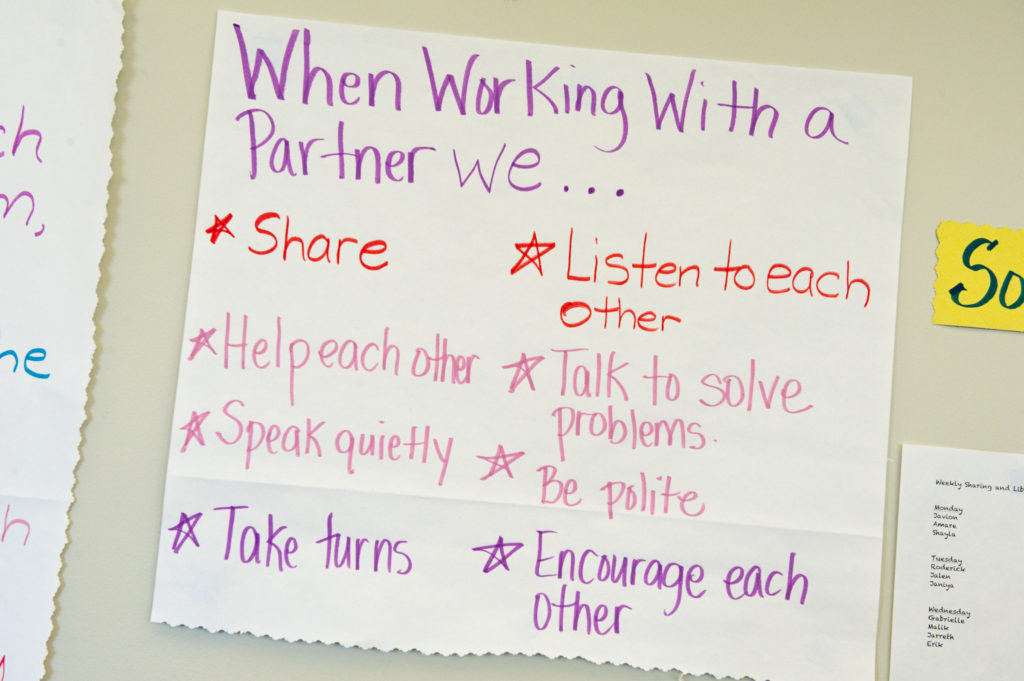
If you visited my classroom during Morning Meeting these days, you’d probably see first graders working with partners and using the conversation skills we’ve been working on all year. We’re now doing lots of partner work during the school day, and Morning Meeting is one of the times when we practice and fine tune the skills needed to make partner work go well.
So what does this look like? In our Morning Meetings, we often do partner greetings, and we sometimes do group activities that involve pairing off, such as “Double This, Double That” and “Toe-to-Toe.” I also sometimes use a partner chat format during the sharing component of Morning Meeting. Partner sharing works especially well with questions that I want all the children to think about and answer: for instance, “What’s one thing you did in school this week that you’re proud of?” or “What’s one thing you’d like to know about weather?”
We could share answers about these questions around the circle, but sharing with partners is quicker. Sharing with a partner also gives each child more time to answer and ensures that each sharer will have an attentive audience. Here’s how it works:
It sounds simple, but it took lots of practice and incremental teaching to get to the point where they can do this quickly and independently. For instance, in the beginning, the partners would use rock-paper-scissors to decide who would share first, and it would be that person’s turn to speak until I signaled them to switch. I built their stamina—for sharing and for listening—by giving each person a very short amount of time to talk at first, and then gradually increasing it. Now they switch on their own.
Later, we learned about asking good questions and added that into our partner conversations. One issue I noticed was that it was hard for children to wait until it was their turn to respond. If they had a question or a comment in mind, they’d interrupt. To work on this skill—turn-taking—I gave each pair of partners an index card with a speech bubble on it. The person sharing would hold the card and put it down when he or she was done. Then the partner would pick the card up and hold it until she or he was done . . . and so on. It sounds formulaic, but it really helped—and eventually, the practice paid off and they didn’t need to use the cards anymore.
Here’s one last tip, in case you decide to try using a partner share format at Morning Meeting. Before partners start sharing, tell the group that when they finish, you’ll choose a few people to report on what their partners said. For instance, a child you call on might say “I heard my partner Jackson say he was proud of the structure he built out of paper and tape,” or “I heard my partner Brady say he wants to know how people know what the weather will be each day.”
Adding this step takes only a minute or two, and it’s well-worth the time. Knowing they are accountable for sharing what their partner said gives children a reason to listen carefully and ask questions to make sure they understand. The children whose partners share their ideas sit up taller and seem to feel good when their partners explain what they said. In our meetings, it’s a moment that really sets the tone and reinforces how we work together: by listening and sharing, and valuing the contributions of others.
Want to read more about how to teach skills related to partner work to young students during Morning Meeting? Try The Morning Meeting Book. This bestselling, comprehensive guide has clear explanations of each component and its purpose; sample greetings, activities, and message charts; and step-by-step guidelines for implementing Morning Meeting in any K–8 classroom.